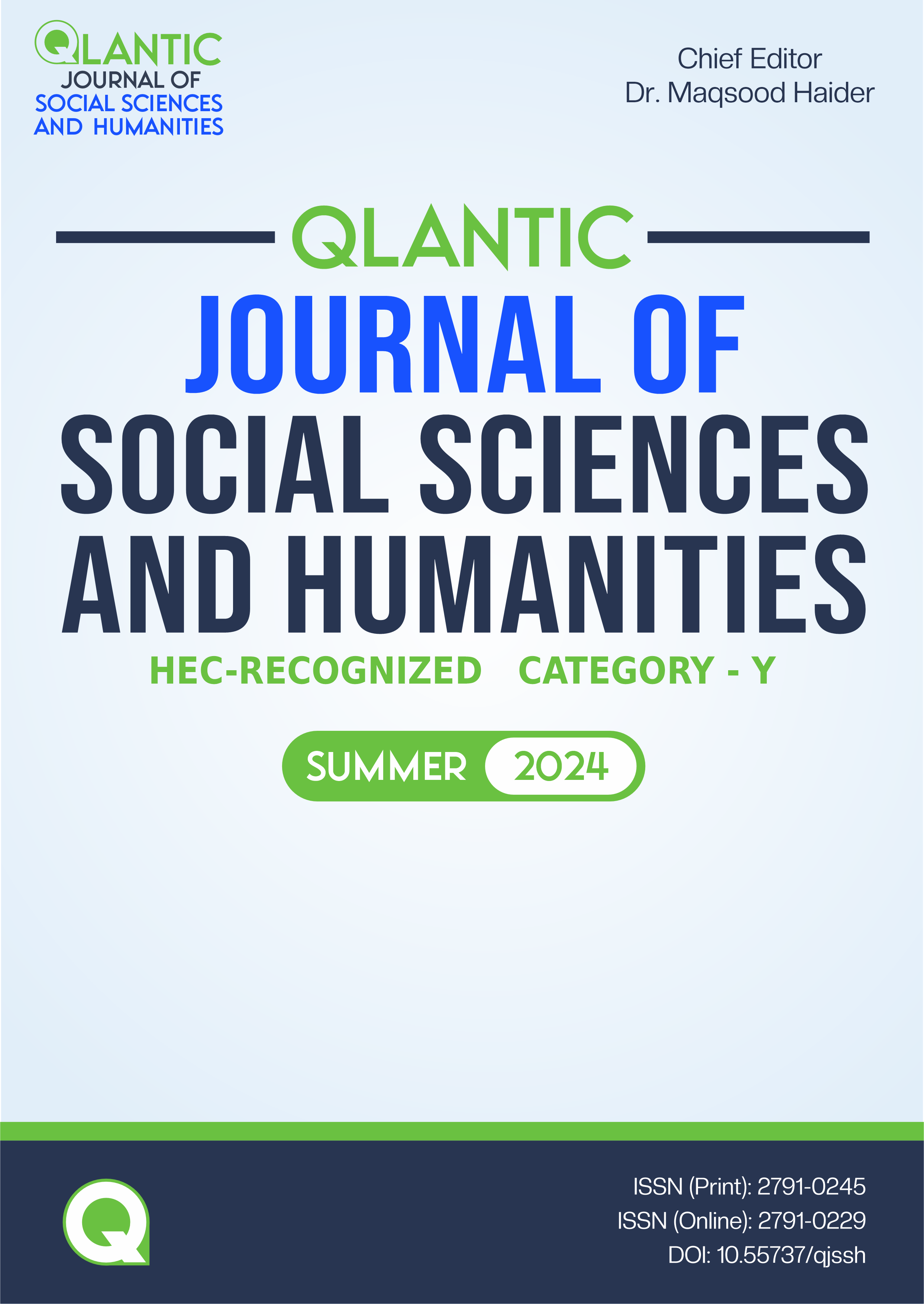Socio-Economic Implications of Snow Cover Area in the Upper Indus Basin
DOI:
https://doi.org/10.55737/qjssh.571394499Keywords:
Snow Cover Area (SCA), Socio-economic Implications, Household IncomeAbstract
The Indus River, one of the principal waterways in Asia, specifically the Indian Subcontinent, originates from the Himalayan Region and Qinghai-Tibet Plateau. Understanding snow cover dynamics is one of the most vital components for effective hydrological resource management and assessing the impacts of local, regional, and global climatic variations. Variations in the radiation of snow microstructures and snowpacks have profound socio-economic and environmental consequences, affecting agricultural productivity, reservoir supply for factories, environmental sustainability, governance of land resources, and overall community resilience. Fluctuations in snowmelt patterns can lead to water shortages or surplus, influencing food security and economic stability in a country largely dependent on agriculture. Utilizing Moderate Resolution Imaging Spectroradiometer (MODIS) satellite data, this study assesses the implications of Snow Cover Area (SCA) on water security and livelihood of agricultural-related sectors. A comparative analysis of snow cover reveals a shifting trend in the accumulation period, with notable anomalies affecting the agricultural output, which affects the household income related to the agricultural sector. This research underscores the necessity of adapting water management strategies to align with evolving snow cover dynamics to mitigate potential socio-economic risks.
References
Atif, I., Mahboob, M. A., & Iqbal, J. (2015). Snow Cover Area (SCA) change assessment in 2003 and 2013 using MODIS data of the Upper Indus Basin (UIB), Pakistan. Journal of Himalayan Earth Sciences, 48(2), 117. https://www.proquest.com/docview/1792584561?sourcetype=Scholarly%20Journals
Barnes, W. L., Pagano, T. S., & Salomonson, V. V. (1998). Prelaunch characteristics of the moderate resolution imaging spectroradiometer (MODIS) on EOS-AM1. IEEE Transactions on Geoscience and Remote Sensing, 36(4), 1088-1100. http://dx.doi.org/10.1109/36.700993
Hall, D. K., & Riggs, G. A. (2010). Normalized-difference snow index (NDSI). Encyclopedia of snow, ice, and glaciers. https://www.usgs.gov/landsat-missions/normalized-difference-snow-index
Hasson, S., Lucarini, V., Khan, M. R., Petitta, M., Bolch, T., & Gioli, G. (2014). Early 21st-century snow cover state over the western river basins of the Indus River system. Hydrology and Earth System Sciences, 18(10), 4077-4100. http://dx.doi.org/10.5194/hess-18-4077-2014
Joshi, R., Kumar, K., & ampPalni, L. M. S. (Eds.). (2015). Dynamics of climate change and water resources of northwestern Himalaya (Vol. 203). Springer International Publishing.
Joshi, R., Kumar, K., Pandit, J., & amPalni, L. M. S. (2015). Variations in the seasonal snow cover area (SCA) for Upper Bhagirathi Basin, India. In Dynamics of Climate Change and Water Resources of Northwestern Himalaya (pp. 9-21). Springer International Publishing.
Justice, C. O., Townshend, J. R. G., Vermote, E. F., Masuoka, E., Wolfe, R. E., Saleous, N., ... & Morisette, J. T. (2002). An overview of MODIS Land data processing and product status. Remote sensing of Environment, 83(1-2), 3-15. http://dx.doi.org/10.1016/S0034-4257(02)00084-6
Negi, H. S., Jassar, H. S., Saravana, G., Thakur, N. K., Snehmani, & Ganju, A. (2013). Snow-cover characteristics using Hyperion data for the Himalayan region. International journal of remote sensing, 34(6), 2140-2161. http://dx.doi.org/10.1080/01431161.2012.742213
Tariq, M. A. U. R., & van de Giesen, N. (2012). Floods and flood management in Pakistan. Physics and Chemistry of the Earth, Parts A/B/C, 47-48, 11–20. https://doi.org/10.1016/j.pce.2011.08.014
Wardlow, B. D., Anderson, M. C., & Verdin, J. P. (2012). Remote sensing of drought: innovative monitoring approaches. CRC Press.
Published
Issue
Section
License
Copyright (c) -1 Kinza Hameed, Sidra H. Qureshi

This work is licensed under a Creative Commons Attribution-NonCommercial 4.0 International License.





